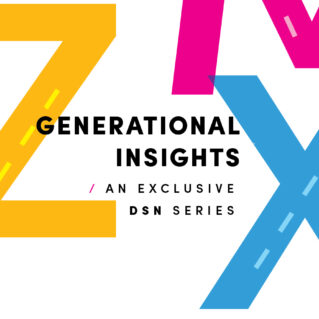Here are the best practices to ensure yours is effective, accurate and truthful.
In late October 2021, the Federal Trade Commission (FTC) sent letters to more than 1,100 companies warning that misrepresentations or deceptive claims about earnings or income opportunities could trigger civil penalties of up to $43,792 per violation. Recipients of these notices included virtually every major direct selling company and various other types of “gig economy” businesses.

The warning letters did not provide examples of claims that might give rise to an action, but for many years the FTC has published guidance on how to make representations about money-making opportunities that are not deceptive. One of the most important features of a non-deceptive income claim is that it is supported by unbiased data. And in recent years, the FTC has repeatedly emphasized that representations about income opportunities should reflect the earnings of a typical distributor.
For most direct sales companies, their income disclosure statement (IDS) is their most prominent—and public—presentation of the earnings opportunity available to their prospective and current distributors. So, ensuring that your IDS reliably and accurately reflects the actual experience of a typical distributor, as borne out in your company’s business intelligence data, should be a top priority for
every direct seller. We’ve outlined some strategies we’ve used to help our clients create an IDS that effectively captures the earnings opportunities available to typical distributors while guarding against representations that could be construed as misleading.
Strong Preferred Customer Programs Help Companies Accurately Capture Typical Distributor Activity
Every direct selling company has some distributors who merely signed up to receive a discount on the company’s products. These distributors have no interest in selling the company’s products or building a business. They are merely end-user consumers, and they will earn little-to-no income from the company—which can deflate the average earnings across all distributors.
In an attempt to address this issue, some companies report the income of only a subset of distributors to try to provide a clearer picture of the experience of typical distributors who are actually interested in the business opportunity. One of the most common methods we have seen companies use is to exclude distributors who have no commissionable activity within a given time period from the calculation of disclosed distributor earnings. But excluding such distributors risks allegations that the IDS artificially inflates earnings by including only those distributors who have achieved some degree of success.

Instead, direct selling companies should consider a “preferred customer” program that allows new participants to accurately classify themselves from the beginning as a non-business builder who is only interested in consuming the company’s products. Preferred customers are generally more than just one-off retail customers, and they typically want to make regular or periodic product purchases at a discount. A robust preferred customer program that provides appropriate incentives for individuals to self-classify upon registration gives companies a principled and defensible way to exclude from their IDS persons who have no desire to participate in the compensation plan.
A preferred customer program also makes it easier to quantify genuine demand for the company’s products, as this category of customers cannot participate in the compensation plan and is therefore purchasing solely for personal consumption.
Direct selling companies should ensure their preferred-customer programs adequately incentivize participants to appropriately classify themselves upon registration. For instance, if the only meaningful difference between preferred customers and distributors is the opportunity to participate in the compensation program, a rational individual will choose to become a distributor, even if they do not really intend to build a business.
For a preferred customer program to be effective, it is important for a company to provide adequate incentives to steer persons who love the products but do not want to build a business to enroll as preferred customers. This can be accomplished by lowering the enrollment and renewal fees for preferred customers, offering larger discounts to preferred customers,and/or by sending periodic gifts or product samples to preferred customers that are not available to distributors. Making product auto-shipments available exclusively to preferred customers is another great incentive that many companies offer.
Distributor Expenses Should be Disclosed Where Possible
IDSs frequently do not disclose or quantify business expenses incurred by the typical distributor that reduce their net earnings, which paints an overly rosy picture of distributor earnings. For instance, many IDSs do not include statements regarding costs charged by (and known to) the company, including fees for registration and renewal, distributor websites, shipping, conferences and events, etc. The IDS should also prominently disclose that, as independent contractors, distributors may choose to incur various other business expenses that are not reimbursable by the company, which reduce distributors’ net income. An IDS that fails to apprise distributors of these fees and expenses creates risk of FTC scrutiny.
Business Intelligence Data Calculations Should Accurately Reflect the Typical Distributor.
Calculating a typical distributor’s income is no easy task. Some companies’ IDSs merely disclose the total amount of compensation paid out to distributors at each level over the course of the year, which does not capture how much a typical distributor within that rank earned. It is only slightly better to divide the total compensation paid out to all distributors at a given rank by the total number of distributors within the rank. Because there may be wide variation in how much distributors earned within a rank, simply calculating the arithmetic mean tells potential distributors little about how much a typical distributor at that rank earned.

As a simple example, consider a group of 10 Level-1 distributors. Suppose four distributors earned no income over the course of a year, three distributors earned $10, two others earned $50, and one earned $500. The “average” earnings of the group for the year would work out to $63 per distributor, but the FTC would likely find that number misleading, because it hides the fact that all but one distributor in the group earned less than that amount, and 40 percent earned nothing at all.
There are various strategies companies can take to ensure that the information presented in an IDS reflects a typical distributor’s experience. For example, rather than using mean average to report distributor average incomes, other measures that better reflect the “central tendency” of the incomes across a group, such as the median (the value separating the higher half from the lower half of distributors in terms of their income) and the mode (the most frequently occurring value for distributors’ income), may more accurately show typicality.
Companies should also include clear disclosures in their IDSs, to explain, for example, how the income figures were calculated, and the percentage of distributors who attain each of the various ranks. Ultimately, analyzing the business intelligence data to capture the earnings of a typical distributor is an art, and expert guidance is recommended.

Branko Jovanovic, Ph.D.
Principal at Brattle Group

John C.C. Sanders, Jr.
Winston Founding Partner–Dallas

Katrina G. Eash
Winston Partner

Chase C. Cooper
Winston Partner
The authors of this article—attorneys at Winston & Strawn and economic consultants at The Brattle Group—have teamed up many times to help MLM clients develop IDSs that are carefully crafted to present an accurate and truthful reflection of the typical distributor’s experience. They can review your company’s IDS and help create a document that accurately promotes your income opportunity in accordance with industry best practices and regulatory guidance.


